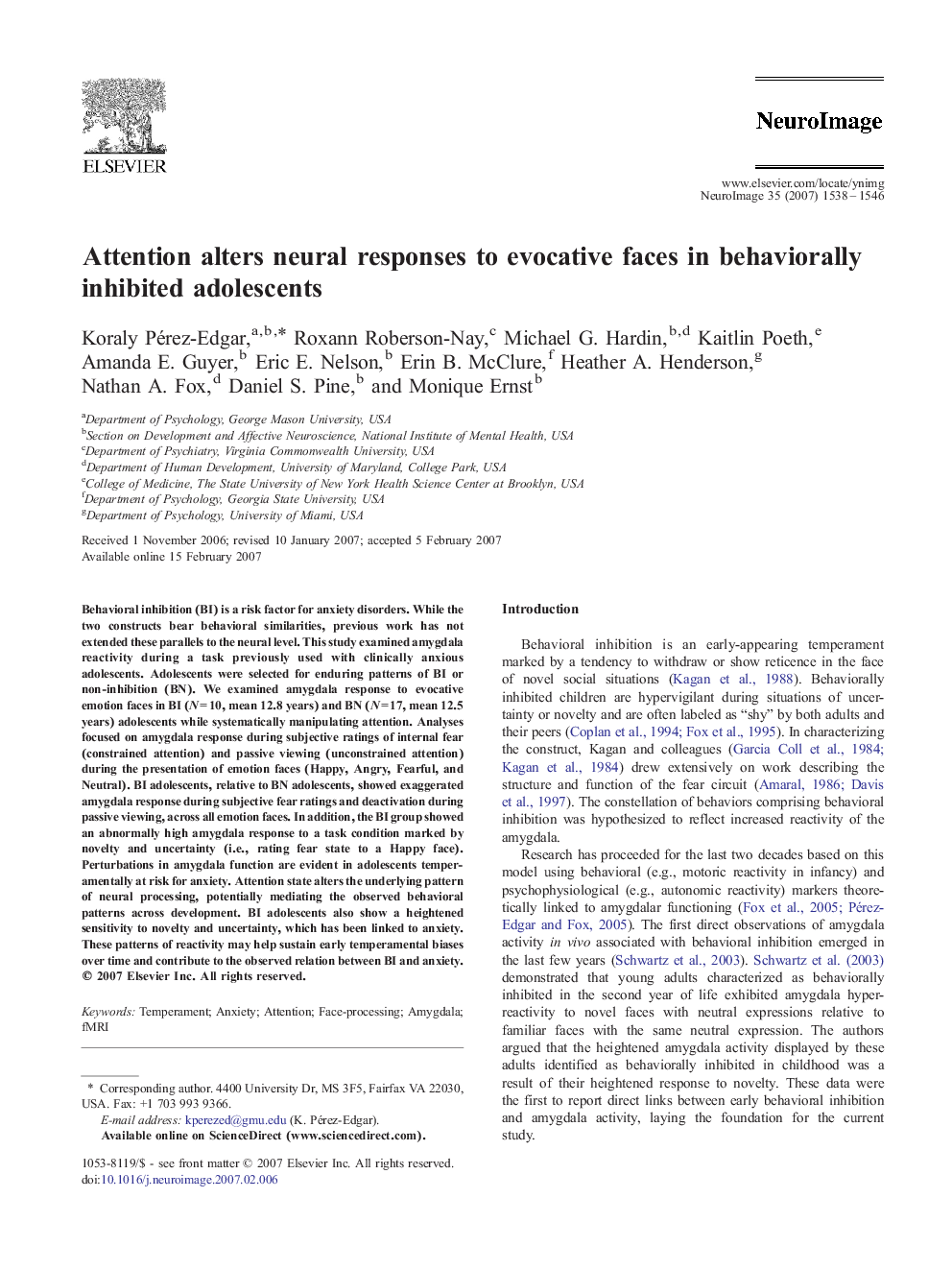| Article ID | Journal | Published Year | Pages | File Type |
|---|---|---|---|---|
| 3073935 | NeuroImage | 2007 | 9 Pages |
Behavioral inhibition (BI) is a risk factor for anxiety disorders. While the two constructs bear behavioral similarities, previous work has not extended these parallels to the neural level. This study examined amygdala reactivity during a task previously used with clinically anxious adolescents. Adolescents were selected for enduring patterns of BI or non-inhibition (BN). We examined amygdala response to evocative emotion faces in BI (N = 10, mean 12.8 years) and BN (N = 17, mean 12.5 years) adolescents while systematically manipulating attention. Analyses focused on amygdala response during subjective ratings of internal fear (constrained attention) and passive viewing (unconstrained attention) during the presentation of emotion faces (Happy, Angry, Fearful, and Neutral). BI adolescents, relative to BN adolescents, showed exaggerated amygdala response during subjective fear ratings and deactivation during passive viewing, across all emotion faces. In addition, the BI group showed an abnormally high amygdala response to a task condition marked by novelty and uncertainty (i.e., rating fear state to a Happy face). Perturbations in amygdala function are evident in adolescents temperamentally at risk for anxiety. Attention state alters the underlying pattern of neural processing, potentially mediating the observed behavioral patterns across development. BI adolescents also show a heightened sensitivity to novelty and uncertainty, which has been linked to anxiety. These patterns of reactivity may help sustain early temperamental biases over time and contribute to the observed relation between BI and anxiety.
